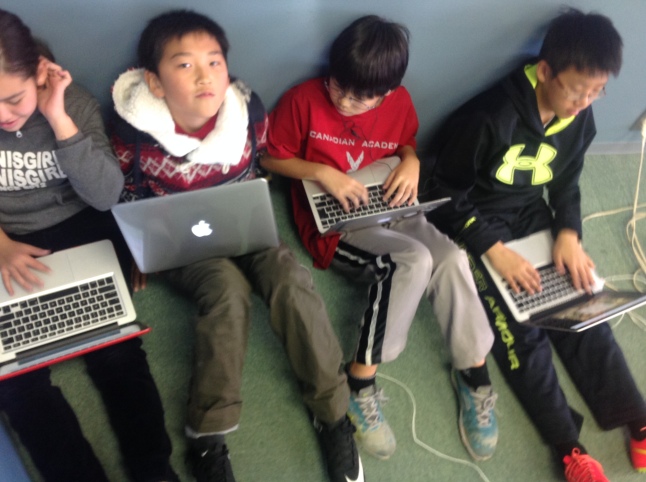
Creative Commons Image by WarzauWynn
“32::3 – A messy room”
Today I finished the last section of the report, Living and Learning with New Media by the MacArthur Foundation, which summarizes findings from a three-year study of teenagers and how they use media. Over the past few weeks, this article has really made me think and reflect on what my students are learning and how they are using their laptops and other devices, both in and out of school.
It states that, “contemporary social media are becoming one of the primary “institutions” of peer culture for U.S. teens, occupying the role that was previously dominated by the informal hanging out spaces of the school, mall, home and street.”
This is maybe obvious, but I hadn’t thought of it like that before and it is so true. This mall metaphor brought me back to my middle school and early high school days with my braces and horribly permed hair. My mother would drop me off at the mall for a few hours to hang with my friends. Even though she wasn’t there to monitor my behavior, there were rules I was expected to abide by for this privelege – not running around, yelling or being otherwise disrespectful or rude to other shoppers. There was also the obvious expectation of not stealing or participating in any other sort of illegal activity. While, I pretty much followed these rules, I’m sure in a group with six other teenaged girls with equal amounts of Aqua Net in their hair sporting pegged Guess jeans, that we were at times loud and took up the whole walkway trolling for cute boys.

I totally looked like this back
in my “mall” days
Have our students explicitly been told expectations for social media/screen time at home or in school?
I wish I could say “YES!” as the MS Tech teacher and curriculum integrator at our school, but I can’t. I think sometimes I feel those skills and rules are obvious, but they are not to most young adults. Most of their parents and teachers do not participate in social media, but they allowed to sign up and then need to figure it all out on their own.
What I’m finding now in my classroom is that while kids use social media A LOT, no one has ever taught them how to use it. Most teens figure out the general rules and learn what is expected in these “hangouts”, but many don’t and then many are brought to the attention of the school because of inappropriate use or their inability to manage their time well.
I was doing a lesson in my class this week on “Keeping Our Computers Happy”. I spent a whole hour class on giving my seventh graders some general guidelines and then just giving them TIME to – do a software update, clean off their desktop, clean out their emails, organize their Drive and even physically clean their screen and keyboard. I have to say it was one of the most valuable lessons I think I’ve taught recently.
As I moved around the room, I was shocked at what little my seventh graders knew about basic maintenance of their laptop and the systems/software we use. For example, when I was moving around, I noticed THOUSANDS of emails in their inboxes. Many of them had twenty-plus email notifications from Facebook per day. They had no idea how easy it was to turn those off and unsubscribe from other mailing lists. They were almost in awe by this and were generally relieved to know that their inboxes weren’t going to get full as quickly. These little nuggets of information are something very easily I can pass on to my students. I’m also thinking that I will provide PD time for the faculty and staff to do the same sort of activity.
While I found the report interesting and it overall gave me a lot of examples and everyday metaphors to use when explaining today’s media to faculty and parents, I didn’t agree with everything that was written.
I don’t agree with the part of the article that states:
” we don’t believe that educators and parents need to bear down on kids with complicated rules and restrictions… about how they should engage on line. Simple prohibitions, technical barriers, or time limits are perceived as ill-informed exercises in power.”
I’m not sure what they mean by “complicated rules”, but our kids need rules, they need boundaries on their tech use. I see so many kids floundering because they can’t get organized, they try to multi-task too much and they are online into the wee hours of the night. As educators, this is maybe where a big shift should be happening. We all know that content acquisition is shifting, we aren’t the beacons of knowledge in our classroom anymore, but we do need to model and teach our kids how we manage our content and our resources, so they successfully can do the same.
In our advisory/middle school block time, there is frequently time carved out for study skills and organization, but only recently has it started to include digital organization, in combination with locker and agenda checks. Even though many educators don’t have the knowledge or comfort level to teach these skills (YET!), I hope we start to teach these crucial learning 2.0 productivity and balance skills to our students, as they may be the most crucial.

Image Courtesy: KarenSaraGaches on Flickr
“Organize Me Please”



